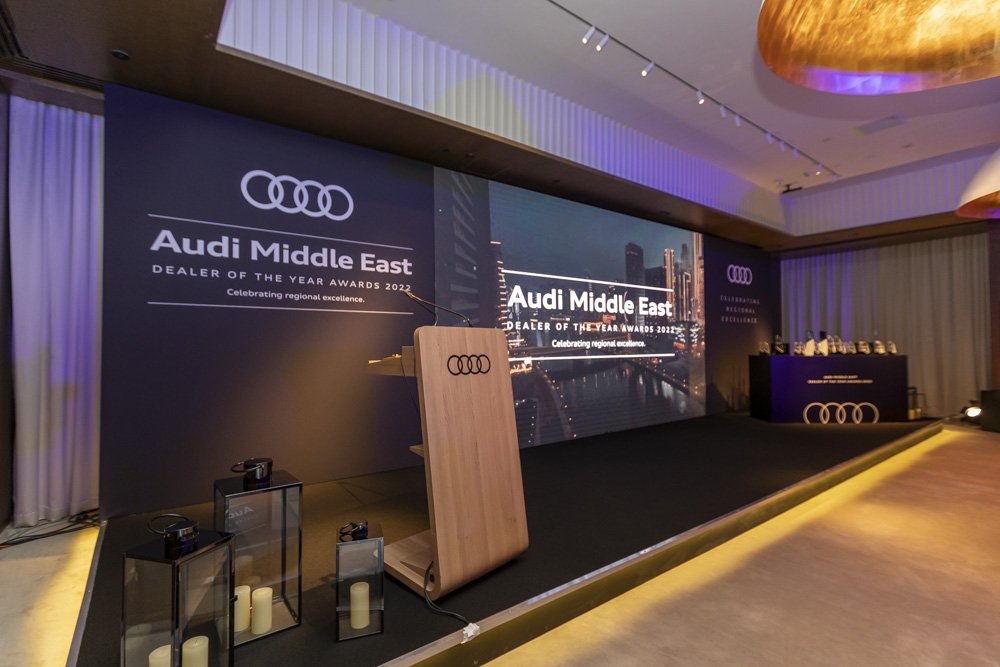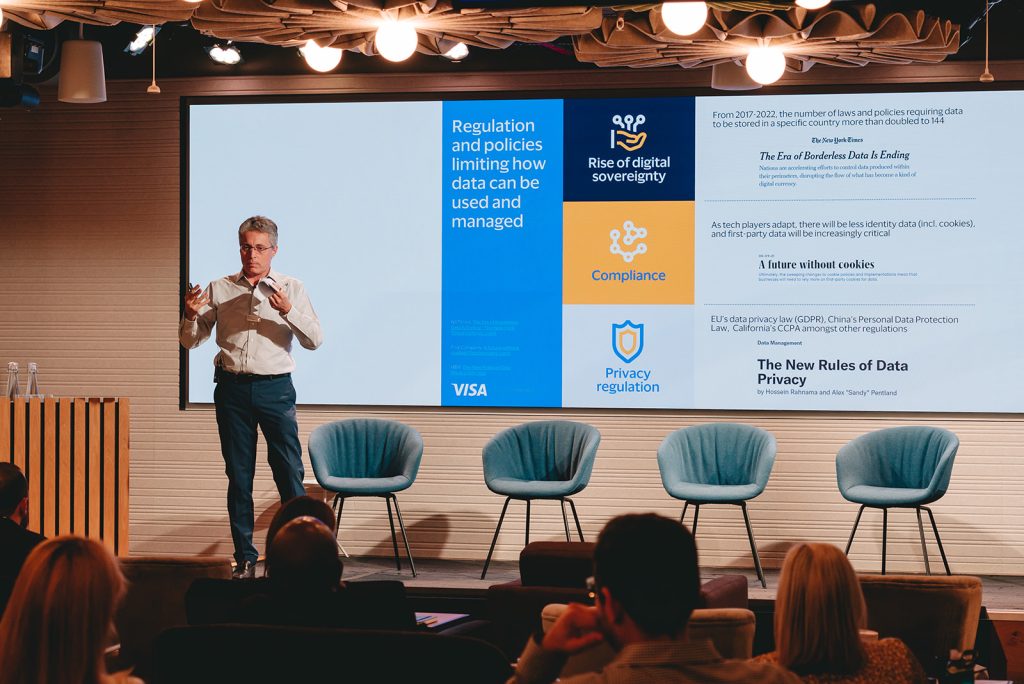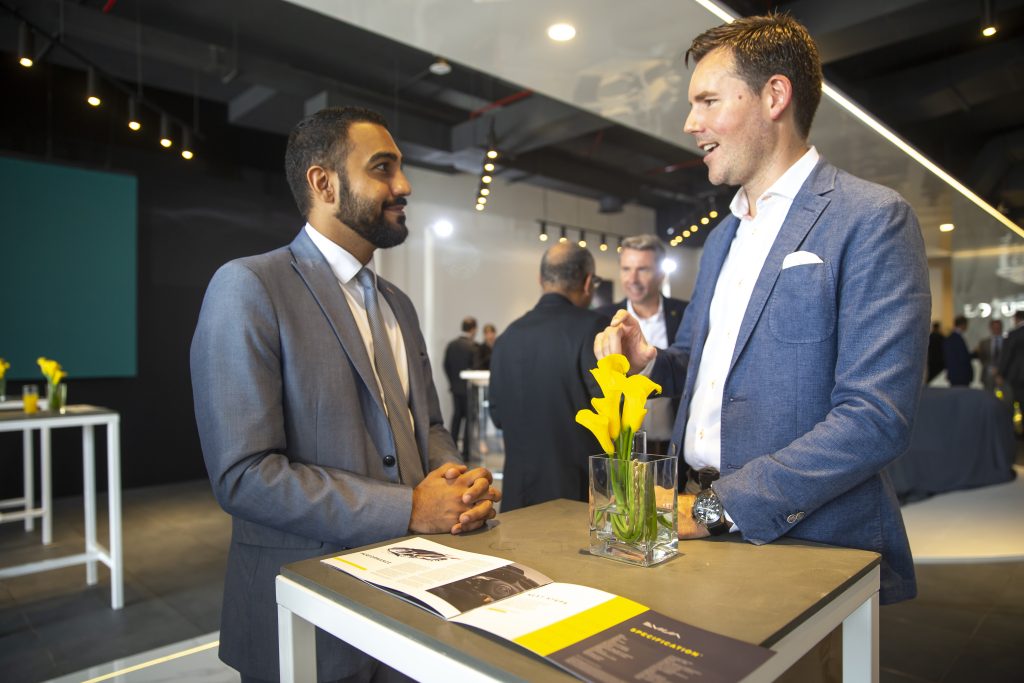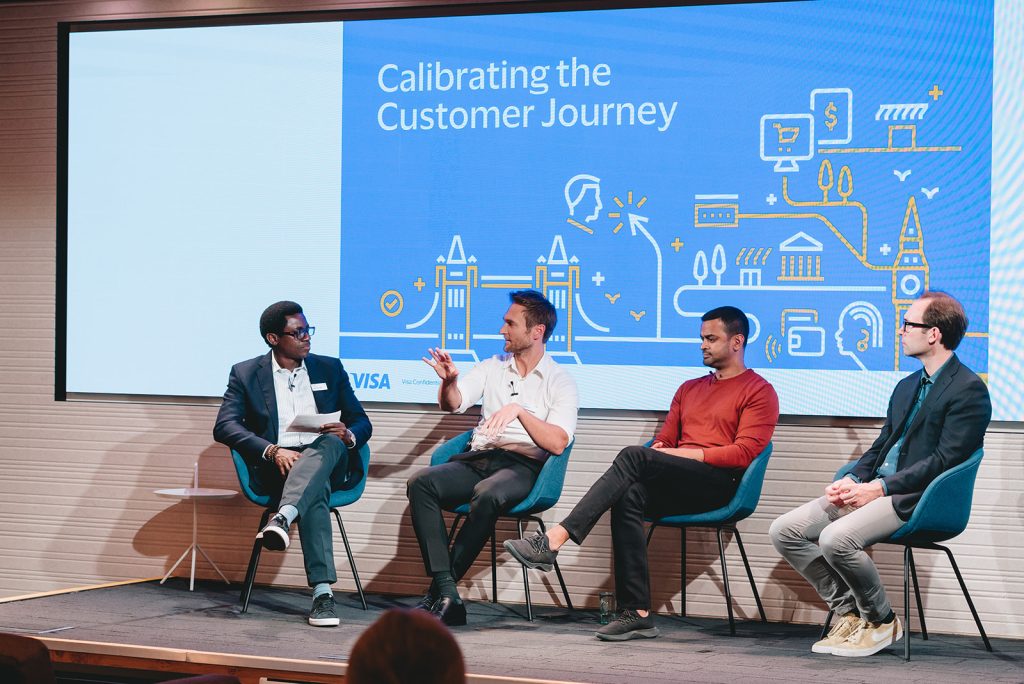Your biggest conference of the year is underway. Hundreds of eager attendees fill the auditorium, and thousands more are tuned in online. But as your CEO steps up to deliver the keynote, the microphone emits an ear-piercing screech, the main screen remains stubbornly blank and the live stream buffers endlessly for remote viewers.
In mere moments, your carefully planned event descends into chaos, leaving a lasting impression – but not the one you’d hoped for!
This nightmare scenario can be the reality if you underestimate the critical role of technology and AV production in modern corporate events. When mismanaged, event tech can derail presentations, frustrate attendees, and tarnish your brand’s reputation. It can turn a potential triumph into a viral disaster, with social media amplifying every glitch and gaffe.
But here’s the good news – with the right approach, event technology and AV production can elevate your event tenfold. It’s not just about avoiding disasters – it’s about creating smooth, immersive experiences that captivate audiences and deliver your message with impact.
In this blog, we’ll unpack the essentials of managing event technology and AV production, offering practical strategies for choosing the right setup, troubleshooting issues, and maximising the impact of your event tech. Whether you’re planning a large-scale corporate conference, an exclusive automotive reveal, or an intimate luxury event for Ultra High Net Worth Individuals, mastering these elements is key to ensuring your event’s success.

Choosing The Right Audio-Visual Setup For Corporate Events
The foundation of any successful event lies in its audio-visual setup and is often the first thing attendees consciously or subconsciously judge. Crystal-clear sound, vibrant visuals, and seamless transitions set a professional tone and create an atmosphere of quality that reflects positively on your brand. On the flip side, technical glitches, poor sound quality, or subpar visuals can undermine your credibility and distract from your message, no matter how compelling it may be. Get this right, and you’re halfway to delivering an exceptional experience. Get it wrong, and you risk undermining your entire event. Here’s how to ensure you’re making the right choices:
- Align with your event objectives: Before diving into equipment lists, clarify your event’s goals. A product launch demands different AV requirements than a board meeting or a luxury brand showcase. Your tech should enhance, not overshadow, your message.
- Know your audience: Are your attendees tech-savvy millennials or seasoned executives? Understanding your audience helps tailor your AV choices to their expectations and comfort levels.
- Venue assessment is crucial: Every space has unique acoustics, lighting, and layout challenges. A site visit with your AV team is non-negotiable. While working with the venue’s in-house AV staff can provide valuable insider knowledge, it’s important to critically assess their capabilities and equipment. Don’t hesitate to bring in external AV experts if the in-house team or equipment doesn’t meet your standards. Remember, your event’s success hinges on top-notch AV performance, so always prioritise quality and reliability over convenience.
- Plan for interactivity: One-way communication doesn’t cut it anymore. Consider incorporating audience response systems, live polling, or Q&A platforms to boost engagement.
- Prioritise quality over quantity: It’s tempting to opt for the latest gadgets, but reliability trumps novelty. Invest in high-quality basics – crisp audio, clear visuals, and stable connectivity are your holy trinity.
- Test, test, and test again: Never assume everything will work perfectly on the day. Rigorous testing of all equipment, preferably in situ, can save you from last-minute panics.
- Have a backup plan: Tech can be unpredictable. Always have contingencies – spare projectors, backup microphones, alternative presentation formats. It’s better to be over-prepared than caught off guard.
Remember, the most sophisticated equipment won’t salvage a poorly planned event. Your AV setup should flawlessly integrate with your content and overall event strategy, enhancing the attendee experience without becoming a distraction.

Troubleshooting Common AV Issues At Conferences
Even with the most detailed planning, technical hiccups can occur. In these heart-stopping moments, your ability to troubleshoot quickly and effectively can make or break your event. The key here is not just to address the problem, but to do so with such smooth efficiency that your audience barely notices the blip. Here’s how to tackle some common AV issues:
- Microphone malfunctions: When the mic goes silent, check the basics first. Has someone turned it on? Are the batteries fresh? Is it properly connected to the sound system? Always have backup microphones ready to swap in at a moment’s notice.
- Projector problems: If your visuals aren’t displaying, ensure all cables are securely connected and the correct input is selected. Have a spare bulb and even a backup projector on standby for critical presentations.
- Wi-Fi woes: Poor internet connectivity can cripple an event. Work closely with the venue to ensure robust Wi-Fi coverage. For mission-critical operations, consider bringing your own dedicated network.
- Presentation compatibility issues: Avoid last-minute panic by testing all presentations in advance. Have multiple file formats available and use standardised equipment where possible.
- Audio feedback: That ear-piercing screech is enough to send shudders up even the most seasoned event planner’s spine. Adjust speaker and microphone positions, use equalisers to fine-tune sound quality, and consider employing a professional sound engineer for larger events.
- Lighting snags: Proper lighting is crucial, especially for video recording or streaming. Have a lighting expert on hand to make real-time adjustments and ensure your guest speakers and products are always shown in the best light.
- Video playback problems: Whether it’s a promotional video or a CEO’s address, ensure all videos are tested on the actual playback system. Have multiple formats available and a backup plan if video playback fails entirely.
- Live streaming glitches: For events with remote attendees, a stable live stream is imperative. Have a dedicated team monitoring the stream quality and be prepared to switch to a backup streaming service if needed.
The golden rule in AV troubleshooting? Stay calm and communicate clearly. Your audience will be far more forgiving of technical issues if they’re kept informed and can see that you’re actively addressing the problem.
Importantly, prevention is better than cure. Conduct thorough run-throughs before the event, identifying potential issues before they can impact your audience.

Maximising The Impact Of Event Technology To Enhance Attendee Experience
Event technology is about more than just avoiding mishaps. When leveraged effectively, technology becomes a powerful catalyst for engagement, transforming passive attendees into active participants. It breaks down barriers, sparks conversations, and creates shared experiences that can unite your audience. There is true power in event tech – it doesn’t just enhance your event; it can reimagine what’s possible, turning a standard corporate gathering into an immersive, interactive journey that captivates, inspires, and leaves a lasting impact. Here’s how to harness this power to elevate your delegate experience:
- Create immersive environments: Utilise cutting-edge technologies like projection mapping, virtual reality (VR), or augmented reality (AR) to transport your attendees beyond the confines of the venue. Imagine unveiling a new luxury vehicle in a virtual showroom where attendees can customise features in real time, or allowing conference attendees to ‘step into’ a 3D model of your company’s latest innovation. These immersive experiences create lasting memories and deeper understanding of your products or concepts.
- Facilitate meaningful networking: Implement AI-powered event apps that go beyond basic scheduling. These smart tools can analyse attendee profiles and preferences to suggest relevant connections, helping participants forge valuable relationships effortlessly. For instance, an app could notify two attendees with complementary business interests when they’re in the same session, prompting a coffee meet-up afterwards.
- Personalise the journey: Use technologies like RFID (Radio-Frequency Identification) or NFC (Near-Field Communication) to tailor content and interactions to individual attendees. These are essentially smart tags or chips that can be embedded in attendee badges. When scanned, they can trigger personalised experiences, from custom welcome messages on digital screens to curated session recommendations.
- Gamify engagement: Turn passive attendees into active participants by incorporating game-like elements into your event. This approach, known as ‘gamification’, can include things like digital challenges, scavenger hunts, or leaderboards to inject an element of fun and friendly competition. This approach can boost participation, enhance information retention, and create a buzz around your event.
- Provide on-demand content: Utilise event apps or online platforms to give attendees access to presentations, resources, and networking opportunities before, during, and after the event. This extends the life of your event and provides lasting value to participants.
- Embrace hybrid solutions: Try to incorporate virtual elements into your physical events. High-quality live streaming, interactive Q&A sessions, and virtual networking lounges can expand your reach and accommodate remote participants without compromising the experience. This could mean hosting breakout rooms where in-person and virtual attendees can collaborate in real time, or using augmented reality to allow remote participants to ‘walk’ the event floor.
- Harness the power of data: Use event technology to gather real-time feedback and analytics. This valuable data can help you make on-the-spot improvements and inform the planning of future events. For instance, real-time polling during sessions could allow speakers to adapt their presentations on the fly, while heat mapping of the event space could help optimise layout and flow for future events.
Remember, the goal is to use technology to enhance human connections, not replace them. The most successful events strike a balance between high-tech solutions and the irreplaceable value of face-to-face interactions.

Training Staff And Volunteers To Operate Event Technology Smoothly
The most cutting-edge event technology is only as effective as the people operating it. Your team serves as the crucial interface between the tech and your attendees, making their training a vital component of your event’s success. Here’s how to ensure your staff and volunteers are well-equipped to handle event technology:
- Start early and be thorough: Begin your training process well in advance of the event. This gives your team ample time to familiarise themselves with the technology and ask questions. Provide comprehensive manuals or guides that staff can refer to during the event.
- Hands-on experience is key: Theory alone isn’t enough. Give your team plenty of opportunities to practice with the actual equipment they’ll be using. Set up mock scenarios that mimic real event situations, allowing staff to troubleshoot common issues in a low-pressure environment.
- Assign clear roles and responsibilities: Ensure each team member understands their specific role in managing the event technology. Whether it’s overseeing the registration kiosks, managing the event app, or handling AV equipment, clear responsibilities prevent confusion and ensure all bases are covered.
- Create a chain of command: Establish a clear hierarchy for decision-making and problem-solving. This ensures that when issues arise, staff know exactly who to turn to for support or authorisation.
- Emphasise the importance of customer service: Remind your team that they’re not just tech operators, but ambassadors for your event. Train them to assist attendees with patience and positivity, especially when it comes to troubleshooting tech issues.
- Prepare for the unexpected: While you can’t anticipate every possible scenario, you can prepare your team to handle surprises. Teach them to stay calm under pressure and provide them with a set of general problem-solving steps they can apply to various situations.
- Utilise peer learning: Pair less experienced staff or volunteers with seasoned team members. This buddy system can provide on-the-job training and immediate support during the event.
- Conduct dress rehearsals: Before the event, run through the entire programme as if it were the real thing. This full rehearsal can reveal potential issues and give your team confidence in their abilities. It’s an opportunity to test all systems under realistic conditions and ensure smooth transitions between different parts of the event.
- Prioritise speaker tech orientation: Insist on a tech run-through with all presenters and speakers, no matter how pressed for time they may be. Familiarise them with the equipment they’ll be using, such as clickers, autocues, or any other presentation tools. Even a brief practice session can prevent significant issues during the actual presentation. A speaker’s comfort with the technology can make or break a session, so this step is crucial for the overall success of your event.
- Provide ongoing support: During the event, ensure there are knowledgeable tech support staff available at all times. Consider setting up a dedicated communication channel for staff to quickly reach out for help if needed.
- Gather feedback and continually improve: After the event, debrief with your team. What worked well? What challenges did they face? Use this feedback to refine your training process for future events.
Your staff and volunteers are the human element that brings your event technology to life. By investing time and resources into their training, you’re not just preventing potential tech mishaps – you’re enhancing the overall experience for your attendees and ensuring your event technology is used to its full potential.
The Role Of Event Apps And Virtual Platforms In Corporate Events
Event apps and virtual platforms have become indispensable to corporate events, fundamentally reshaping how we plan, execute, and experience events.
These digital solutions serve as the central nervous system of modern events, consolidating information, facilitating connections, and providing real-time insights. They’re breaking down geographical barriers, allowing for truly global participation and diverse discussions that drive innovation.
Crucially, these digital tools are extending the lifespan of events beyond their physical duration. Attendees can revisit content, continue discussions, and maintain connections long after the event concludes, encouraging lasting communities around your brand.
And in an era of increasing environmental consciousness, the sustainability aspect of these digital solutions cannot be overlooked. By reducing the need for printed materials and potentially decreasing travel requirements, they align with growing corporate and societal focus on environmental responsibility. This not only reduces the carbon footprint of events but also resonates with eco-conscious attendees and stakeholders, enhancing your brand’s reputation.
However, it’s vital to remember that these digital tools are meant to enhance, not replace, human connections. The most successful implementations of event apps and virtual platforms are those that facilitate and enrich face-to-face interactions, rather than attempting to substitute them entirely.
The key takeaway is that technology, when used thoughtfully, can transform a standard corporate gathering into an immersive, interactive journey that captivates and inspires. It breaks down barriers, facilitates meaningful connections, and extends the impact of your event far beyond its physical duration.
As the events industry continues to evolve, embracing these technological advancements will be key to staying ahead. By mastering the art and science of event technology, you can create unforgettable experiences that resonate with your audience long after the event has ended.
Bring In The Experts
At Noble Events, we know managing event technology and AV production can feel complex and overwhelming at times. Demanding events are, inevitably, unpredictable. But after 16+ years in the industry and thousands of successful events delivered for our clients, we know exactly what it takes to pre-empt and pivot to overcome challenges and deliver the outcomes you need. Think of us as your worst-case scenario advisers. Our team’s proactive approach, born from years of experience navigating the trickiest of event tech scenarios, means we’ve anticipated and planned for contingencies you might never have considered. Rest assured we’ll have thought of every eventuality – and be 10 steps in front of it – likely before the thought even occurs to you.
So whether you’re planning a large-scale corporate conference, an exclusive automotive launch, or an intimate luxury event for Ultra High Net Worth Individuals, our expertise ensures that your event technology not only functions flawlessly but adds real value to your delegate experience – no matter what challenges may arise.
Ready to take your corporate events to the next level with cutting-edge technology and expert management? Let’s start a conversation today.
